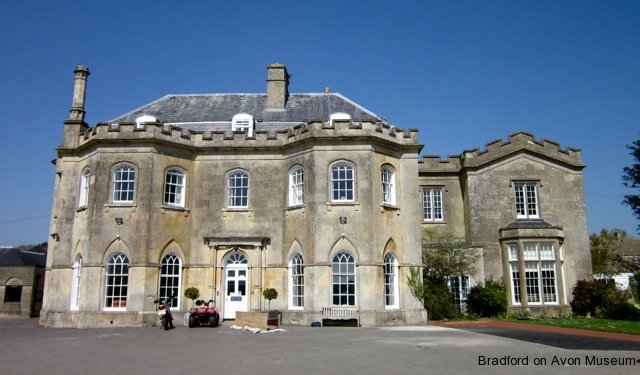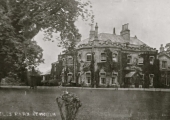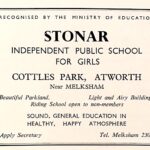.
Cottles Park
Atworth, Bradford on Avon, Wiltshire
.

The south front of Cottles Park house
.
Cottles Park, or Cottles House is a Georgian mansion of ashlar stone that was designed by the Bath architects Thomas Jelly (died in 1781) and John Palmer (1738-1817) and was built between 1775 and 1778. It has a two-storey canted bay on each side of its main entrance. It is notable for its ‘gothick’ features; all the windows of the main façade are pointed in the medieval gothic style, the parapet is battlemented and the chimney on the west side is octagonal tudoresque. Inside is a genuine Tudor late 16th century chimney piece that has been reset, presumably a part of the earlier house on the site that belonged to the Poulett family and it bears their arms. Set back on the east side is an extension in similar style with a ground floor canted bay that was designed by the Bath architect Henry Edmund Goodridge (1797-1864) in the 1830s, at a time when he was also building the new parish church in Atworth.
Thomas Jelly was the architect of the old King Edward’s School in Walcot Street, Bath and of the old Bath Theatre Royal and may have built in Bradford for the Whatly family, to whom he was related by marriage. John Palmer was the Bath City Architect, designer of Lansdown Crescent, the Mineral Water Hospital, St Swithin’s Church in Walcot and much else, as well as the house called Lynchetts in Silver Street, Bradford on Avon.
The house was built for Robert Hale, who died in 1781 without children and the property was inherited by Anne, a brother’s daughter who was married to John Blagden. After her death it was inherited by their son Robert Hale Blagden (1780-1855), who added the extra surname of Hale, making him Robert Hale Blagden Hale. He had the extension to the house added, as well as rebuilding Atworth church in 1832 and the village’s school in 1828.
The area around the house was a small separate manor that seems to have not been part of the land given to Shaftesbury Abbey in 1001. The limits of the land in the charter skirta around what it calls “Ælfgar’s border at Atworth” (Ælfgares imare at Attenwrðe). It now takes its name from the Cotel family who held it in the 13th century and was also known as Atworth Parva, Little Atworth and Atworth Cottles. It was held by members of the Beaushyn family during all of the 15th and 16th centuries until sold to William Poulett in 1604. At the beginning of the 18th century it had passed from the Poulett family to Gabriel Hale. The Hales were from Gloucestershire and their main residence was there, so eventually Robert Blagden Hale sold Cottles to Charles John Thomas Conolly (1818-1871) of Midford Castle in 1857.



